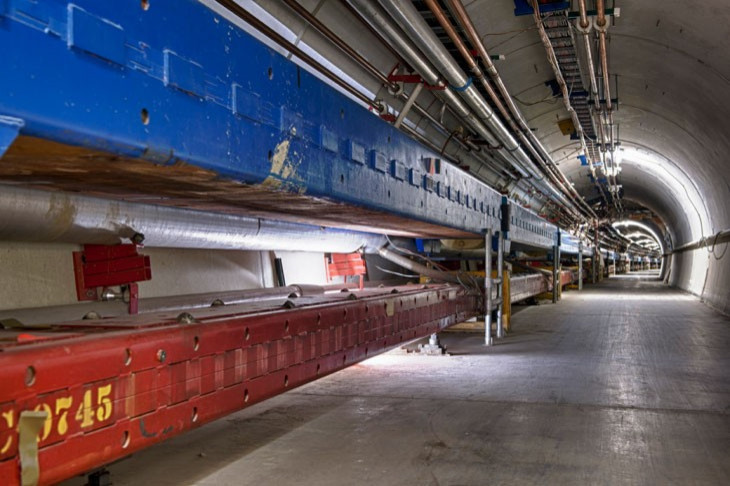Fermilab's Tevatron Collider Shutdown may mean Power Shift in Physics

The Tevatron at Fermilab was shut down on Friday after 26 years of operation, as what once was the world's most powerful particle accelerator falls victim to the dwindling budget of the U.S. Department of Energy. (D.O.E.)
Closing down Tevatron, the machine key to discover the God particle Higgs boson, is a great disappointment to American physicists, and unveils the physics power shift from the U.S. to Europe as the financial crisis hits the vessel of scientific research.
The achievements of the Tevatron will be inherited, and most likely outpaced, by its European successor in Geneva. While it was the Tevatron's magnet technology that helped the creation of the 17-mile Large Hadron Collider (LHC) of the European Organization for Nuclear Research (CERN), LHC has taken over Tevatron's position as the world's largest and highest-energy particle accelerator. 1,684 of the total 6,361 physicists registered to work on the LHC come from the United States, according to CERN spokesman Jim Gillies, reports The Washington Post.
While the U.S. DOE and Fermilab has aided the development of the LHC, the U.S. is losing its own soil to nurture scientific discoveries at the frontier.
There's no way the LHC exists without the Tevatron, said Christopher Quigg, a theoretical physicist working at Fermilab for over 35 years.
The LHC lies near Geneva, beneath the border of France and Switzerland, and carries on the hope of physicists around the world, in answering the fundamental questions in physicists.
The Tevatron has discovered three of the 17 particles believed fundamental to the universe, and its success story includes the discovery of the top quark, a subatomic particle that functions as one of the building blocks of nature.
Many exciting measurements and discoveries were made here which helped finalize the model by which we explain the behavior of elementary particles, Dmitri Denisov, a Fermilab scientist, told Fox News. That's over 1,000 papers published, over 1,000 Ph.D.s defended along with the participation of 40 countries around the world.
In the quest for the Higgs boson, a theoretical particle supposed to unfold the mystery of the universe. Called God particle,Higgs Boson is supposed to be giving mass to other particles as the lynchpin of the modern particle physics theory called the standard model. Finding the Higgs means the biggest crown in today's physics.
The Tevatron, however, was too weak to see the particle. While it did help narrow the search for the Higgs, the LHC is rapidly outpacing what the Tevatron could see, according to William F. Brinkman, director of the Fermilab's Office of Science.
Though the Tevatron was shut down, Fermilab could be still at the cutting edge of science, said the lab's scientists.
Not only are there plenty of collected data to analyze, Fermilab has a few major projects in hand, including the composition of subatomic neutrinos by firing them underground to South Dakota, and research on high intensity physics, dubbed Project X.
Scientists are also installing a device, called the Dark Energy Camera, in Chile. The device is due to conduct the largest galaxy survey of all time.
However, according to Fermilab, funding is an issue as building another big particle project, upgrading and maintain existing facilities will cost billions of dollars.
Currently Fermilab employs about 1,900 people, including 300 to 400 scientists. Some of the Tevatron employees will be transferred to other initiatives at the lab, such as Project X, the MicroBooNe and the Illinois Accelerator Research Center.
We need to look at the future of American particle physics, not through the lens of politics, but through the lens of science, and determine where we can make the greatest impact with finite resources, said Committee Member, Rep. Judy Biggert.
These strategic investments are a critical step in maintaining the talent and scientific leadership necessary to for us to meet the challenges of the 21st century. And it's at cutting-edge facilities like Fermi where the next generation of young minds will be inspired to pursue innovations here in the U.S. that will create jobs, cure diseases, and push the frontiers of science.
© Copyright IBTimes 2025. All rights reserved.





















